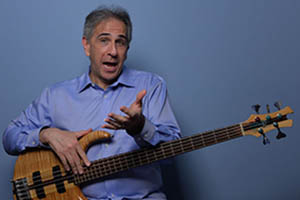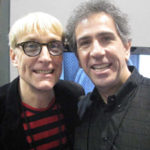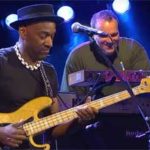Finding the right tool for the job is often easier than you think
By Jon Liebman
Week of July 29, 2019
I always enjoy getting together with my old friend Adam Nitti. Having gotten to know Adam over the last decade or so has been nothing short of inspiring. In this week’s interview, Adam told me all about his current gig with Kenny Loggins, plus details of his solo projects and upcoming new record.
When the conversation turned to gear and equipment, I was at first taken aback when Adam told me that for his new signature bass, he had scaled down to a 5-string, doing away with the high C string. It wasn’t the choice of a low B over a high C string that surprised me; that’s what I would expect in a 5-string, in nearly every case. What caught me off guard was why he would limit the range of his instrument, given the popularity of his 6-string tapping and upper register soloing.
His answer, naturally, made perfect sense.
Most of the work he gets called for, he explained, requires the bottom end of the instrument. Ya know… playing bass. It’s just a matter of using the right tool for the job, he says. He also mentioned that there’s a certain expectation of sound when he’s called for a gig or a session. Often, it’s a P bass with flatwound strings. In some cases, tunes have just got to have a fretless. Still others require the ultra deep frequencies of extended range basses.
I couldn’t help but think of the the interview I did recently with Pete Griffin, during the Generation Axe tour. In each of those shows, Pete found himself accompanying Tosin Abasi, Nuno Bettnecourt, Zakk Wylde, Steve Vai, and Yngwie Malmsteen. Each artist required Pete to use different “tools” to get the expected sound, necessitating quick changes between 4- and 5-strings, some with different tunings, and an elaborate effects configuration that kept him hopping nonstop, every night.
While Pete’s situation was extreme, most of the time you’ll find yourself on the other end of the spectrum, commanding a traditional 4-string bass, with traditional tuning.
In my teaching, I always strive to remain faithful to the practical elements of playing bass, the “taking care of business” aspect of playing the instrument. Nearly all the lessons on For Bass Players Only were developed with the 4-string bass in mind (except, of course, for Joe Santerre’s phenomenal 6-string course).
While the temptation might be present to pull out all the stops with who-knows-what kind of gear and effects, keep in mind the lesson of using the right tool for the job. Rudy Sarzo also drove the point home when I interviewed him. He hit the nail right on the head when he said, “I joined the band; the band didn’t join me.” It would serve us all well to keep that in mind.
If you have a thought on the subject, leave a comment below. I’d love to know what you think. In the meantime, check out my interview with Adam here.






I totally agree.Bass is Bass.
I prefer 3 basses IbanezSR505active for anything 2000ish on multiple styles, B.C.Rich Eagle 2x split P Dimarzios for the harder edged rock 60’s-90’s and an Ibanez Axestar 4(detuned Eb) that dials in amazing 80’s tones.